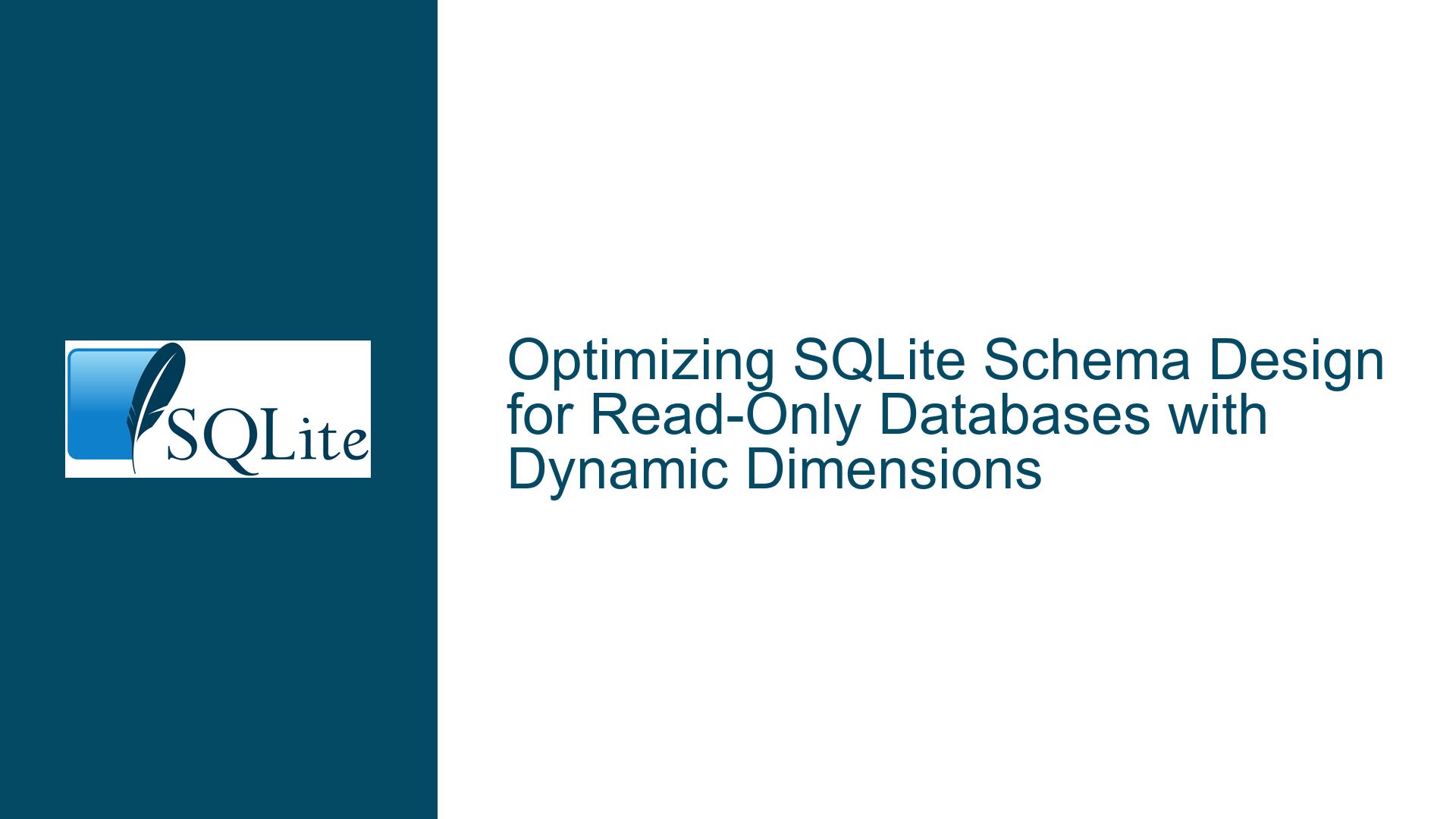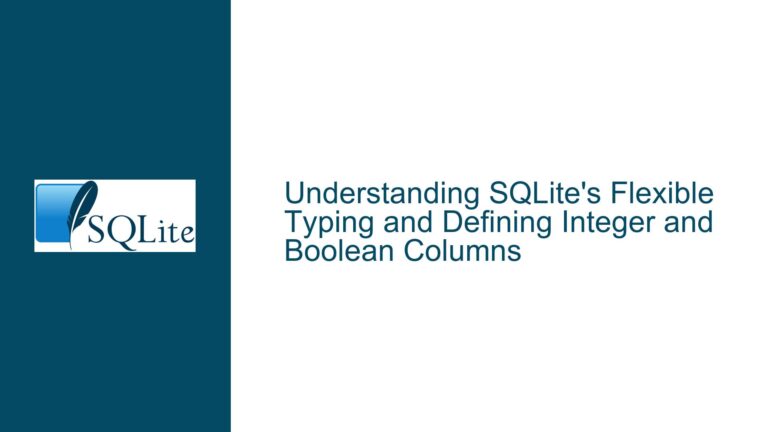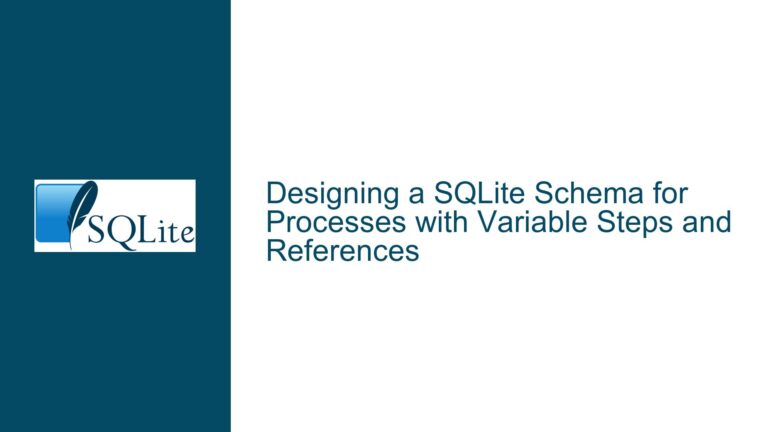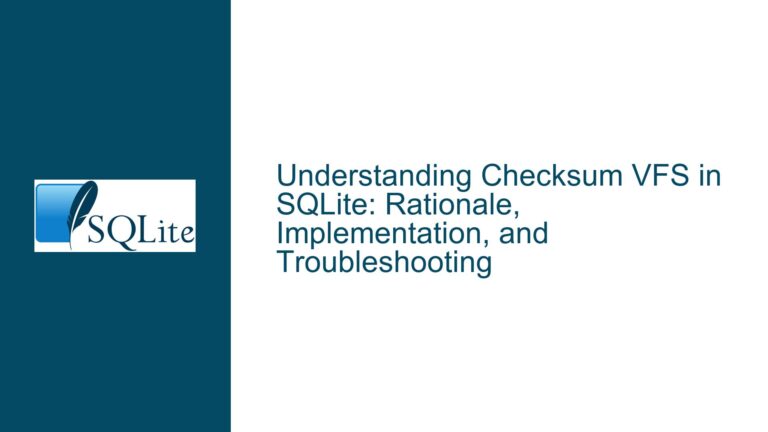Optimizing SQLite Schema Design for Read-Only Databases with Dynamic Dimensions
Storing Dimensions in Normalized Form vs. Denormalized Columns: A Deep Dive
When designing a schema for read-only SQLite databases that contain unique dimensions for each database, the decision between normalized and denormalized storage is critical. The normalized approach involves storing dimensional data in separate tables, while the denormalized approach embeds these dimensions directly into the main table as columns. Each method has its own set of trade-offs, particularly when it comes to query flexibility, performance, and maintainability.
In the normalized approach, you would have a person table and a dim table. The person table would store the core attributes like name and salary, while the dim table would store the dimensional data such as career and hobby. This setup allows for a consistent schema across different databases, but it requires joins to retrieve the full set of attributes for a person. On the other hand, the denormalized approach stores all dimensions directly in the person table, which simplifies queries but can lead to schema inconsistencies across databases.
The primary challenge with the normalized approach is the need for dynamic query building, especially when dealing with a variable number of dimensions. This can make it difficult to use prepared statements effectively, as the number of placeholders (?) in the query can vary. Conversely, the denormalized approach simplifies query construction but can lead to inefficiencies when dealing with a large number of dimensions, as each dimension requires its own column.
The Impact of Dynamic Query Building on Prepared Statements and Performance
Dynamic query building is often necessary when dealing with a variable number of dimensions, but it introduces several challenges. Prepared statements are a powerful feature in SQLite that allow for efficient query execution by precompiling the SQL statement. However, when the number of dimensions is variable, it becomes difficult to use prepared statements effectively because the number of placeholders in the query can change.
For example, if you want to filter by multiple dimensions, you might need to construct a query with a variable number of OR conditions, each corresponding to a different dimension. This makes it difficult to use prepared statements, as the number of placeholders (?) in the query can vary. One workaround is to use an IN clause with a dynamically generated list of values, but this also has limitations, particularly when the number of values is large or unknown in advance.
Another issue with dynamic query building is the potential for SQL injection attacks if the queries are not constructed carefully. While SQLite is generally less vulnerable to SQL injection than other databases, it is still important to sanitize inputs and use parameterized queries whenever possible. This can be challenging when dealing with dynamically constructed queries, as the structure of the query itself may be influenced by user input.
Leveraging Temporary Tables and JSON for Flexible Dimension Storage
One potential solution to the challenges of dynamic query building is to use temporary tables. By inserting the values for the IN clause into a temporary table, you can avoid the need for a variable number of placeholders in the query. This allows you to use prepared statements more effectively, as the query structure remains consistent regardless of the number of dimensions.
For example, you could create a temporary table called temp_values and insert the values you want to filter by into this table. Then, you can construct a query that uses a subquery to filter the main table based on the values in the temporary table. This approach allows you to use prepared statements while still accommodating a variable number of dimensions.
Another option is to store the dimensions in a JSON column. This approach provides flexibility in terms of the number and type of dimensions, as all dimensions are stored in a single column. However, this approach has its own set of challenges, particularly when it comes to querying the data. While SQLite has some support for JSON, it is not as robust as in other databases, and querying JSON data can be less efficient than querying structured data.
For example, you could store the dimensions in a JSON column called attributes, which would contain a JSON object with key-value pairs for each dimension. This allows you to store a variable number of dimensions without changing the schema, but it makes it more difficult to query specific dimensions, as you would need to parse the JSON data within the query.
Best Practices for Schema Design in Read-Only SQLite Databases
When designing a schema for read-only SQLite databases, it is important to consider the specific requirements of your application. If the databases are strictly read-only and the dimensions are unlikely to change, the denormalized approach may be more suitable, as it simplifies query construction and can improve performance. However, if you need to maintain a consistent schema across multiple databases or anticipate changes to the dimensions, the normalized approach may be more appropriate.
In either case, it is important to consider the impact of dynamic query building on performance and security. Using temporary tables or JSON columns can provide flexibility while still allowing for efficient query execution, but these approaches also have their own trade-offs. Ultimately, the best approach will depend on the specific requirements of your application and the trade-offs you are willing to make.
Conclusion
The decision between normalized and denormalized storage for dimensions in read-only SQLite databases is a complex one that requires careful consideration of the trade-offs involved. While the normalized approach provides a consistent schema and flexibility in terms of adding new dimensions, it can make query construction more challenging, particularly when dealing with a variable number of dimensions. The denormalized approach simplifies query construction but can lead to schema inconsistencies and inefficiencies when dealing with a large number of dimensions.
Dynamic query building introduces additional challenges, particularly when it comes to using prepared statements and ensuring the security of the queries. Using temporary tables or JSON columns can provide flexibility while still allowing for efficient query execution, but these approaches also have their own trade-offs. Ultimately, the best approach will depend on the specific requirements of your application and the trade-offs you are willing to make.
By carefully considering these factors and experimenting with different approaches, you can design a schema that meets the needs of your application while minimizing the challenges associated with dynamic query building and dimension storage.






